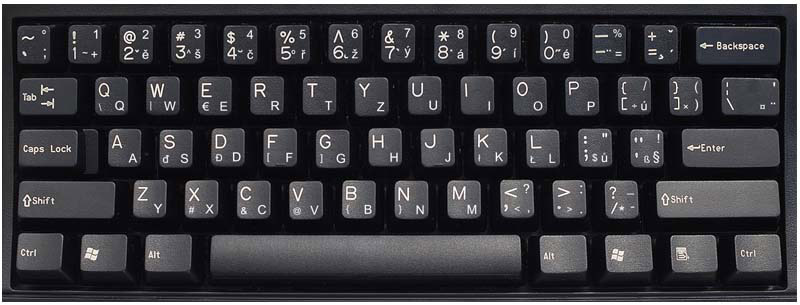
QWERTY [kwur-tee, kwer-] Word Origin adjective
- of or relating to a keyboard having the keys in traditional typewriter arrangement, with the letters q, w, e, r, t, and y being the first six of the top row of alphabetic characters, starting from the left side.
Compare Dvorak Keyboard. Origin of QWERTY First recorded in 1925–30 British Dictionary definitions for qwerty qwerty QWERTY keyboard noun
- the standard English language typewriter keyboard layout with the characters q, w, e, r, t, and y positioned on the top row of alphabetic characters at the left side of the keyboard
Word Origin and History for qwerty
1929, from the first six keys on a standard typewriter keyboard, read as though text, from top left. Mechanical typewriter patented 1867; the QWERTY layout itself is said to date to 1887, dominant in U.S. from early 20c.; it is not meant to slow down typists, but to separate the letters in common digraphs (-sh-, -ck-, etc.) to reduce jamming of swing-arms in old-style machines. It actually speeds typing by requiring alternate-hand strokes, which is one reason the alternative DVORAK keyboard is not appreciably faster. Remnants of the original alphabetic typewriter keyboard remain in the second row of letter keys: FGH-JKL. The French standard was AZERTY; in Germany, QWERTZ; in Italy, QZERTY.
 Liberal Dictionary English Dictionary
Liberal Dictionary English Dictionary